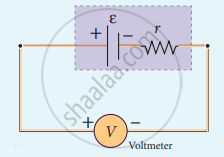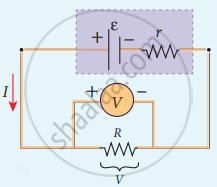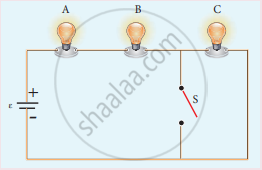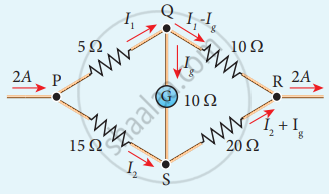Advertisements
Advertisements
Question
Explain the determination of the internal resistance of a cell using voltmeter.
Long Answer
Solution
- The emf of the cell ξ is found by connecting a high resistance voltmeter across it. Without connecting the external resistance R.
- Since the voltmeter draws very little current for deflection, the circuit is called an open circuit.
- Voltmeter reading gives the emf of the cell.
- Resistance ‘R is included in the circuit and current I is established in the circuit.
- The potential drop across the resistor.
R is V = IR …………(1) - Due to internal resistance (r) the voltmeter reads a value V, less than the emf of cell (E).
- V = ξ – Ir
- Ir = ξ – V …………(2)
- Dividing (2) by (1)
(a)
(b)
- Internal resistance of the cell
`"Ir"/"IR" = (ξ - "V")/"V"`
r = `((ξ - "V")/"V")`R - Since ξ, V and R are known, internal resistance r can be calculated.
shaalaa.com
Electric Cells and Batteries
Is there an error in this question or solution?
APPEARS IN
RELATED QUESTIONS
The internal resistance of a 2.1 V cell which gives a current of 0.2 A through a resistance of 10Ω is ______.
What do you mean by internal resistance of a cell?
Three identical lamps each having a resistance R are connected to the battery of emf as shown in the figure.

Suddenly the switch S is closed.
- Calculate the current in the circuit when S is open and closed.
- What happens to the intensities of the bulbs A, B and C.
- Calculate the voltage across the three bulbs when S is open and closed.
- Calculate the power delivered to the circuit when S is opened and closed.
- Does the power delivered to the circuit decrease, increase or remain same?
A cell supplies a current of 0.9 A through a 2 Ω resistor and a current of 0.3 A through a 7 Ω resistor. Calculate the internal resistance of the cell.
Determine the current flowing through the galvanometer (G) as shown in the figure.

